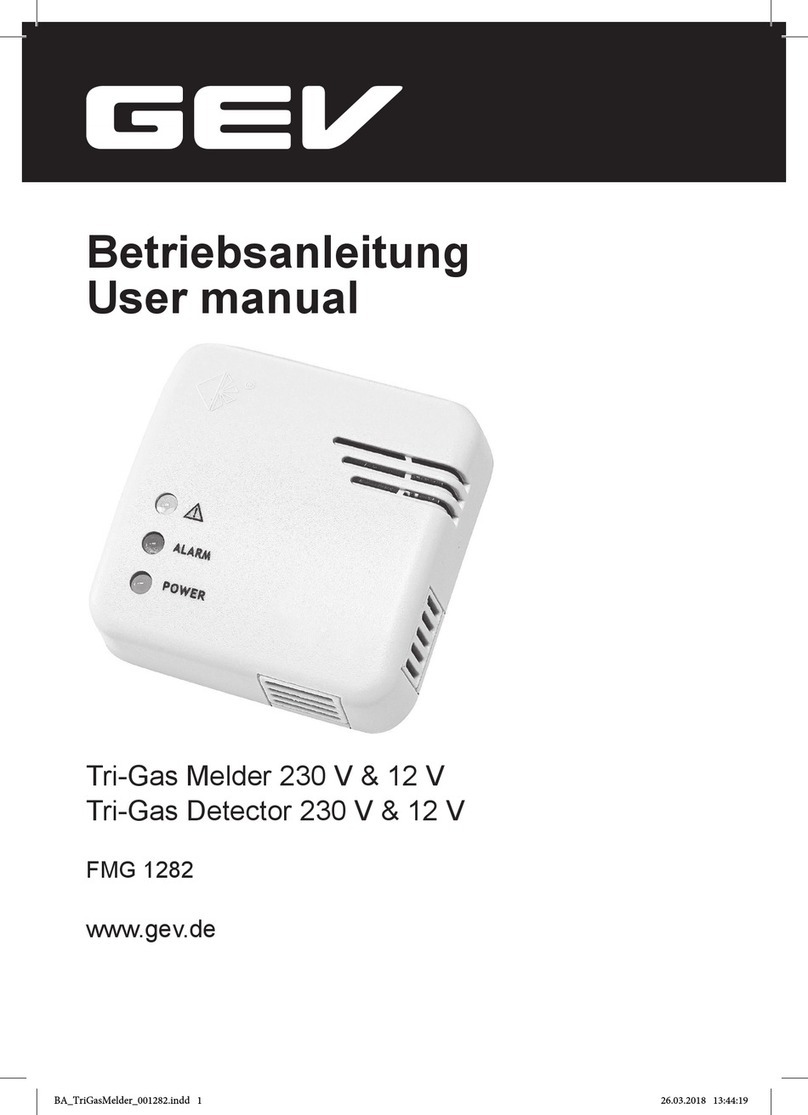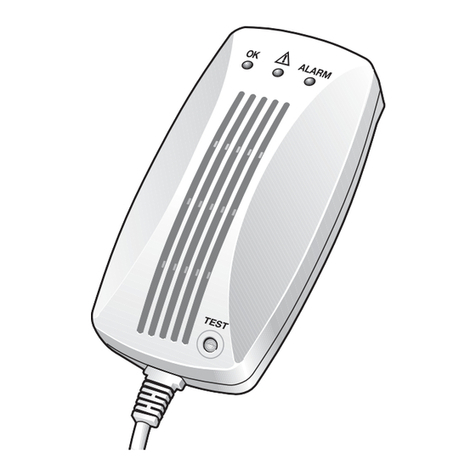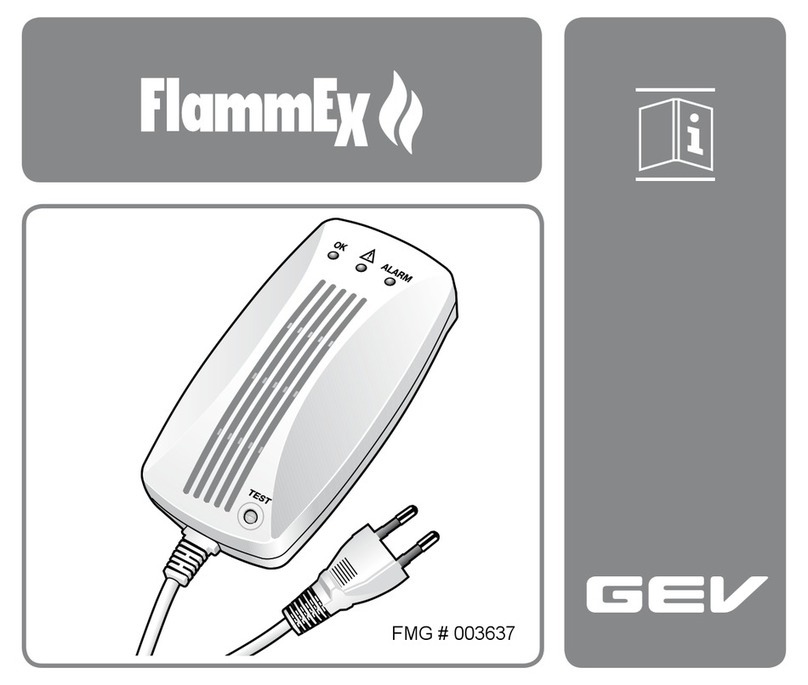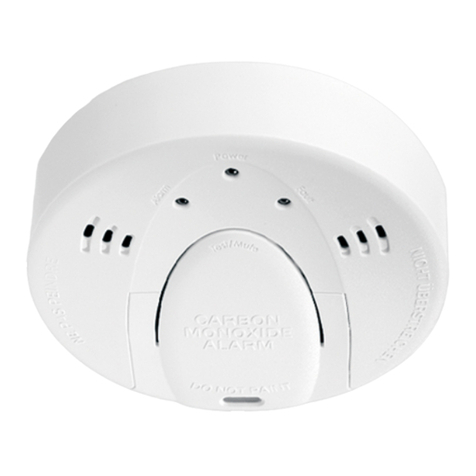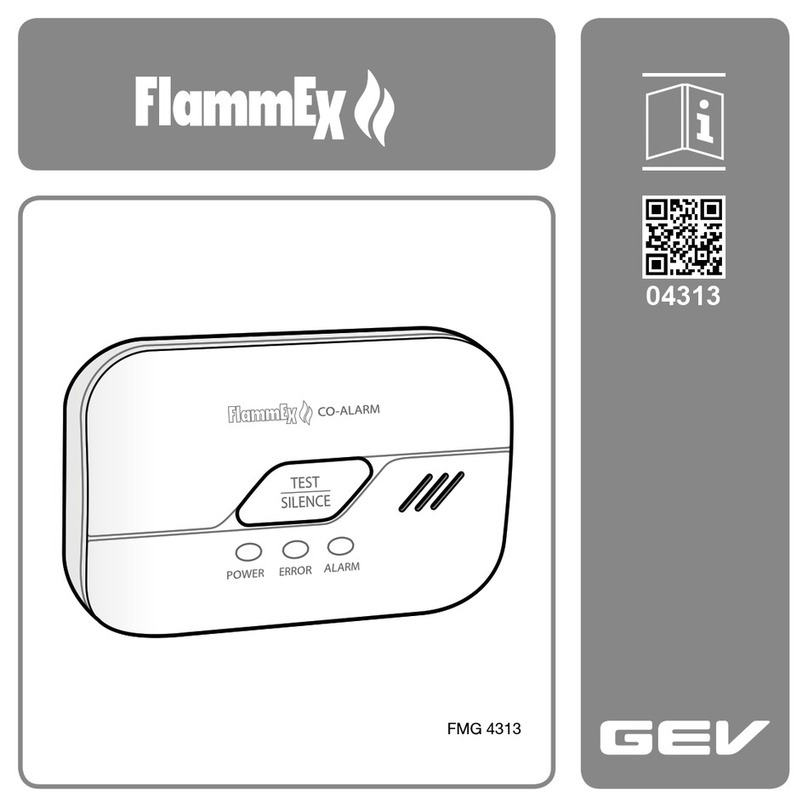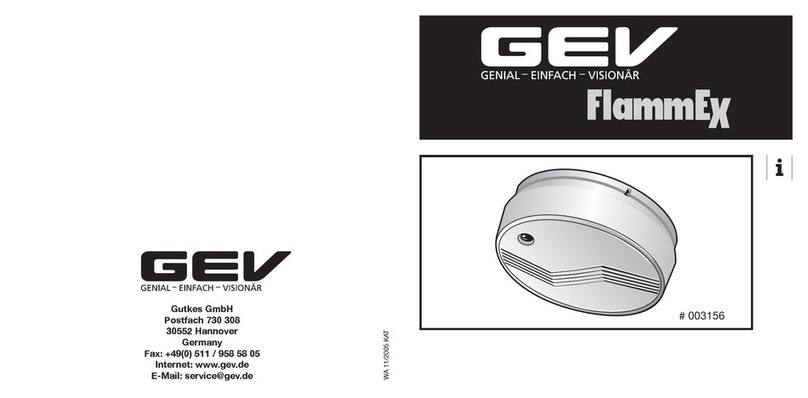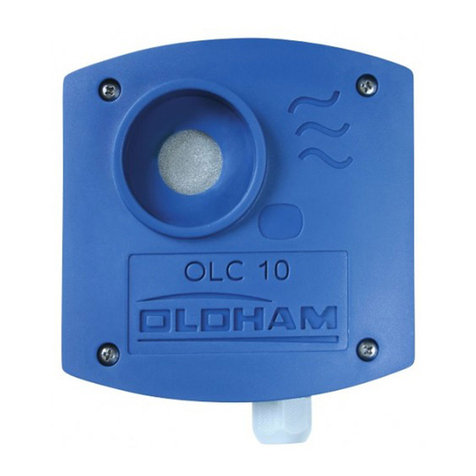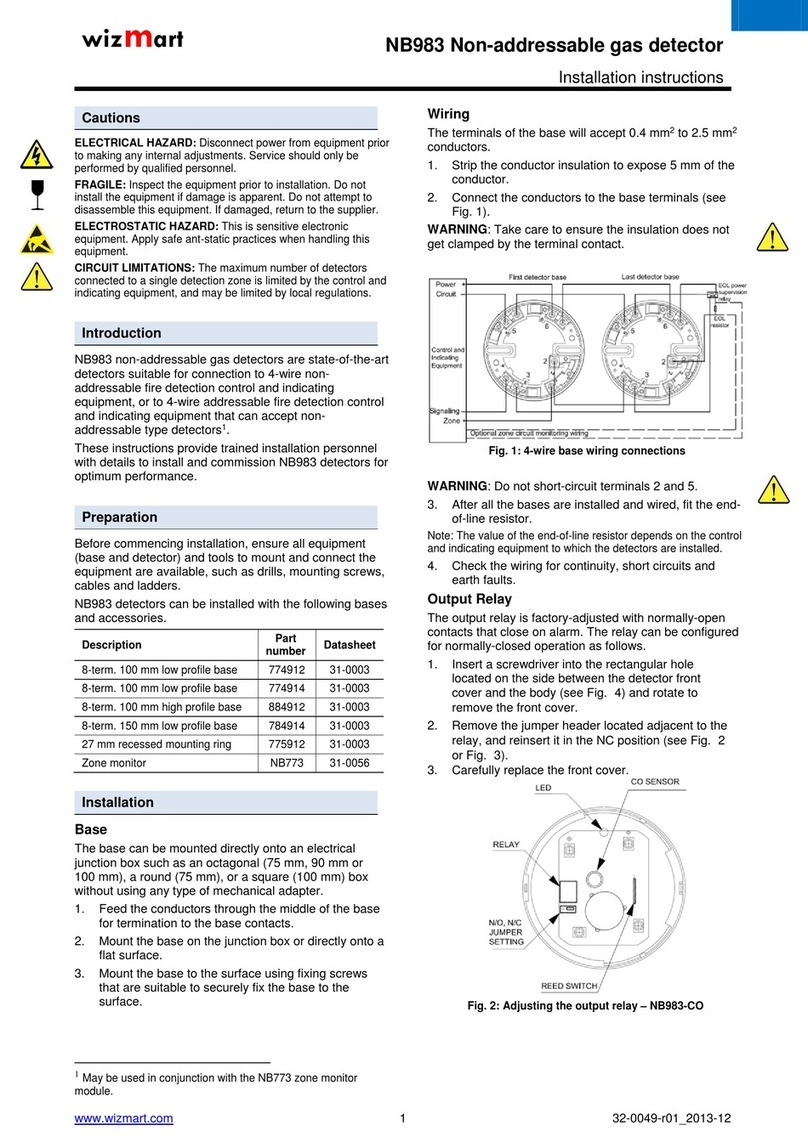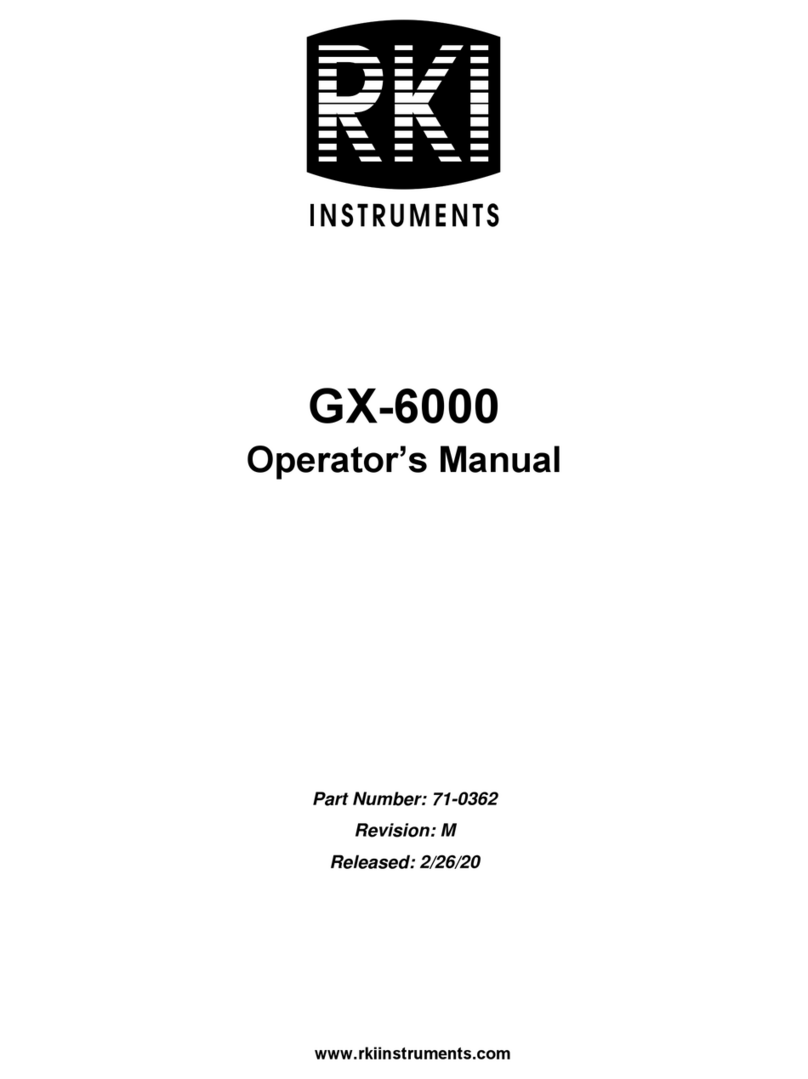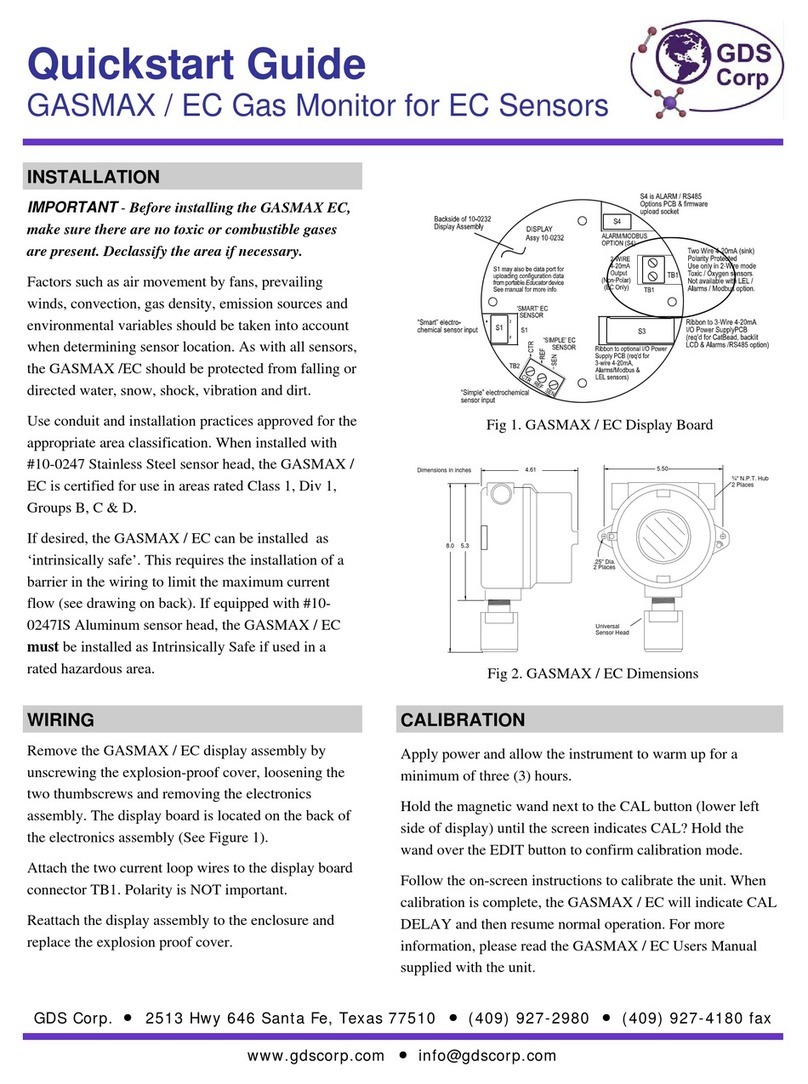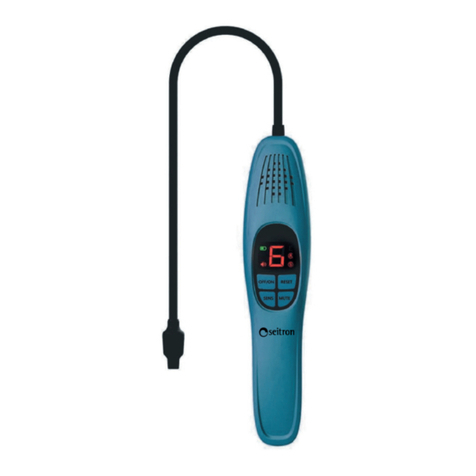
3
Gasmelder 230 V
DE
1 Sicherheitshinweise
1.1 Allgemein
• Lesen Sie die Betriebsanleitung vollständig und sorgfältig vor Gebrauch.
Die Betriebsanleitung ist Bestandteil des Produktes und enthält wichtige Hinweise
zum korrekten Gebrauch.
• Bewahren Sie die Betriebsanleitung auf.
Die Betriebsanleitung muss bei Unsicherheiten und Weitergabe des Produktes
verfügbar sein.
Die Installation dieses Produktes ersetzt keine ordnungsgemäße Installation, Be-
zugehörigen Lüftungs- und Abgassystemen.
Das Gerät verhindert keine chronischen Wirkungen einer Kohlenmonoxidexposition
und kann nicht vollständig vor speziellen Gesundheitsrisiken schützen.
Die Sensoren sind nicht tauschbar.
Gasinstallationen und deren Abschaltvorrichtungen müssen gemäß EN 1775 den
jeweiligen nationalen Vorschriften entsprechen.
Alarmauslösung riechbar.
• Wenden Sie sich bei Fragen, Defekten, mechanischen Beschädigungen,
Störungen und anderen nicht durch die Begleitdokumentation behebbaren
Problemen an Ihren Händler oder den Hersteller.
• Vermeiden Sie Belastungen wie Hitze und Kälte, Nässe und direkte Sonnenein-
strahlung sowie Vibrationen und mechanischen Druck.
Stromschlaggefahr
Das Produkt hat keine tauschbaren oder zu wartenden Teile.
Veränderungen können Fehlfunktionen oder Totalausfall verursachen.
• Lassen Sie Installations-, Demontage- sowie Wartungs- und Reparaturarbeiten
nur von ausgebildetem Elektro/Gas-Fachpersonal ausführen.
• Ziehen Sie vor Arbeiten am Produkt den Netzstecker.
• Schalten Sie vor Arbeiten am Produkt die Sicherung aus, vor allem wenn der
Netzstecker schlecht erreichbar oder das Produkt anderweitig mit dem
Stromnetz verbunden ist.
• Sichern Sie die Sicherung im letztgenannten Fall gegen Wiedereinschalten.
Hinweise zur Netztrennung
Das Produkt hat keinen Netzschalter und darf nur an gut zugänglichen Steckdosen
verwendet werden, um es im Notfall und nach Gebrauch schnell aus dieser entfer-
nen zu können.
Das Produkt ist nur bei gezogenem Netzstecker spannungsfrei.
• Ziehen Sie im Notfall und bei Gewitter das Produkt direkt am Steckergehäuse
heraus.
Explosionsgefahr bei Gasaustritt
• Schalten Sie elektrische Geräte, auch Telefone und Türklingeln nicht ein bzw.
unterlassen Sie deren Benutzung.
Wenn Kohlenmonoxid vermutet wird und die Lüftung nicht sofort möglich ist, müs-
sen Atemschutzgeräte verwendet werden, die unabhängig von der Umgebungsat-
mosphäre wirken.






